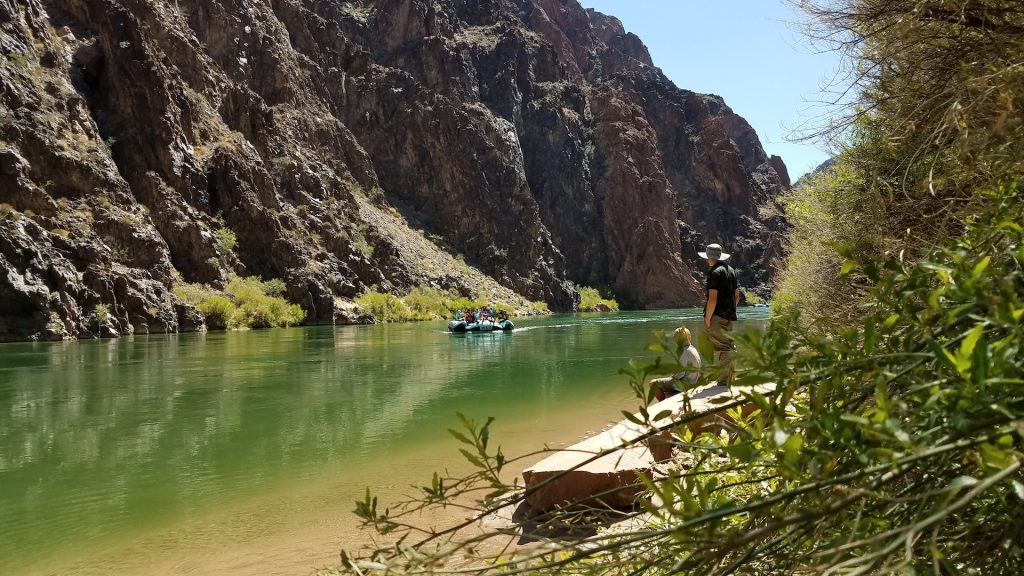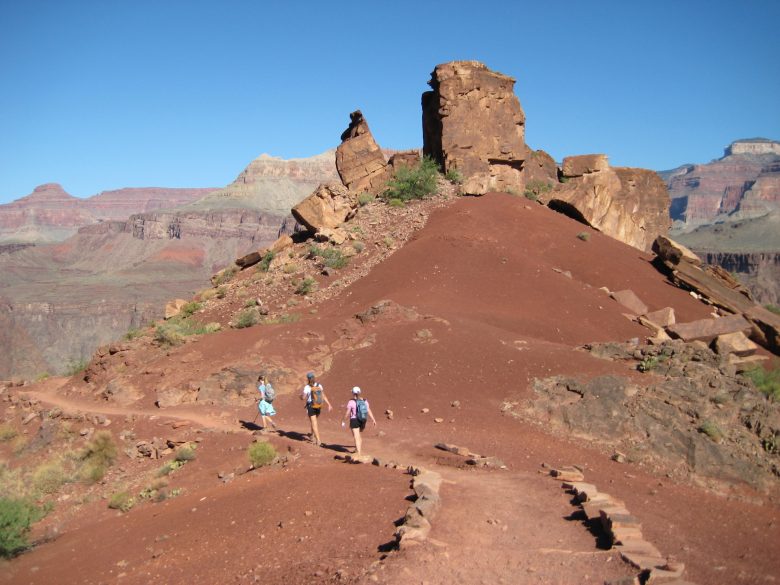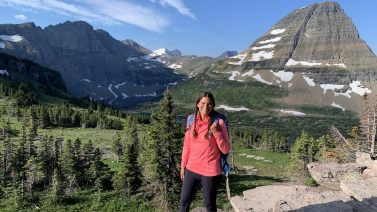This week, I’m honored to feature a guest post by my friend and fellow trailblazer, Audrey Kalman. Audrey’s story is one of grit, adaptation, and grace… a powerful reminder that while our bodies may change, our spirits can still climb mountains. Her honesty about hiking with osteoarthritis, and the emotional terrain she’s navigating, will resonate with any woman who’s ever had to redefine what strength looks like. I hope her story moves you as much as it moved me.
My Evolving Relationship With Acceptance
By Audrey Kalman
Running
Once upon a time, I was a runner.
I ran as a teenager on the dirt road where I grew up in eastern New York state, smelling road tar and skirting puddles. I ran in my twenties on Boston’s sidewalks, inhaling car exhaust and dodging pedestrians. I ran in snow and sun, under clouded skies and under skies achingly blue.
I didn’t think about the natural chemicals my body released. All I knew was that pumping my legs until my heart pounded made me feel alive. I ran 10Ks and trained with hill sprints. I moved to California and ran in San Diego’s dry heat and San Francisco’s fog.
Midway through my first pregnancy in my mid-thirties, running stopped feeling great. Though I knew many women who ran recreationally or even competitively until just before labor began, I needed to pause. But I returned to running soon after giving birth. I ran San Francisco’s iconic Bay to Breakers in 1998, pushing my four-month-old son in a jogging stroller and stopping mid-course to nurse him as wildly costumed (and occasionally completely naked) racers surged past.
Several garden variety injuries—a torn ACL, foot pain, a tweaky back—and a second pregnancy briefly interrupted my running routine, but I always recovered and returned to the road.

Walking
Something changed in my mid forties, though I can’t pinpoint exactly when or exactly what. I found myself running less. Walking became my new running. I hit the trails occasionally but mostly walked my neighborhood, alone or with friends. More than exercise, walking became refuge, solace, and a way to shed anxiety.
Hiking
In 2008, a friend invited me to hike to the bottom of the Grand Canyon. We’d descend to Phantom Ranch at the bottom—and back up! Mules would carry our overnight supplies, but the trip was scheduled for August, the hottest month. I accepted the challenge. Thus began my identity as a hiker. I increased my neighborhood mileage and added steep hills to my routine.
I’d been warned I might fall in love with the Grand Canyon. And I did: with the landscape’s vastness, with the intense concentration required to ensure my next step wouldn’t be my last, with the solitude of trails most tourists never saw. I went again in 2012 and decided in 2019 to make a third visit with my younger son. This would be my first-ever backpacking trip, led by Wildland Trekking and scheduled for May of 2020. I joined a local hiking group to prepare.
When the pandemic hit, the trip was postponed and the hiking group went on hiatus. Nonetheless, I upped my neighborhood mileage, partly to keep up my training and partly to maintain sanity. I worked up to ten miles in my hilly neighborhood carrying a 28-pound backpack.
When it happened in 2021, the third Grand Canyon experience was as magical as the first two and included some of the most challenging hiking I’d done to that point. I remember a so-called “day hike” that involved an extremely steep descent and a return over boulders. The intense effort paid off, I thought, as I cooled my feet in the Colorado river.
Back home, my hiking group resumed. I wondered how I’d lived for almost 30 years within easy driving distance of hundreds of miles of Northern California’s bounty of gorgeous, well-maintained trails without exploring more than a few. The hiking group opened my eyes to the delicious combination of physical movement, time in nature, and belonging in a community of hikers.
In May of 2024, I undertook what turned out to be the most challenging hiking I’ve ever done during a six-day trip in the “hills” of Tuscany. “Hills” make me imagine a gentle, rolling landscape (just as “day trip” calls to mind a leisurely ramble). The tour, booked through Wildland Trekking, organized by Cloud 9 Adventure, and hosted at Col di Lavacchio Agriturismo, took us up and down the Alps and the Apennines just north of Pisa. Mountains–not hills.

Hobbling
I’ve offered this detailed history so you can experience with me the devastation I felt when, early in the new year, the throbbing in my right groin I’d felt for months morphed into sharp discomfort.
One hip X-ray and one medical consultation later, word came back:
Osteoarthritis.
“One in four people may develop symptomatic hip osteoarthritis [OA] in his or her lifetime,” declares an article in the journal Osteoarthritis and Cartilage. The often-debilitating condition can cost dearly, both personally—in terms of individual pain, lessened mobility, and even increased mortality—and at the population level.
Indeed, I was debilitated. Whereas once a ten-mile trail hike would have invigorated me, now I could barely hobble a mile around my neighborhood.
I went through the stages of grief. Denial, anger, bargaining, depression. No! This isn’t happening. Damn it, why is this happening? Give me back my old ailments… transitory knee pain, shin splints, even plantar fasciitis! How can I live if such a core part of my identity is gone? Back to denial: I refuse to accept I’m no longer a hiker who may never be able to move as I once did.
“Maybe you should take it easy,” friends counseled.
I pictured myself lolling about on a chaise lounge eating bon-bons. “I probably won’t.”
Luckily, the prison cell of denial also contains the key to its unlocking.

Accepting
“Is it okay to walk when I’m in pain?” I asked the physical therapist.
She assured me walking was okay as long as my pain level was less than a three or four out of ten. This was decidedly unhelpful. I’ve breathed my way through levels five, six, seven, and eight in service of childbirth, 10K races, and whitewater canoeing. But sitting still was not an option. Sedentary behavior is linked with more pain and poorer management of osteoarthritis long term. Now, even on the days when pain slows my pace and shortens my distance, I still walk.
The wellness world counsels “listen to your body.” But a hiker who heeds her body’s every message might never scale Half Dome or experience the Colorado River from an utterly secluded spot. My hip has forced me to examine questions like: How much pain is too much? How much movement is too much? When am I healthily expanding my boundaries and when am I pushing against limits in ways that might be destructive? And, most significantly, who will I be if I can’t hike?
Trying out answers to these questions has become part of my journey toward acceptance.
Humor, playfulness, and curiosity have become powerful allies. I’ve personified my Aches and Pains and created pet names for them. I greet and acknowledge them each morning. I accept their presence and thank them when they take a day, or even a few minutes, off. The simple practice of externalizing and acknowledging them dilutes their hold over me.

Transforming
“We can’t control what happens to us but we can control how we respond.” I previously understood this mindfulness mantra only on an intellectual level. It became a revelation when I experienced it for the first time.
One rainy day, soon after the confirming X-ray, I was limping around the block. My hip throbbed. My lower back, compensating for my compromised gait, had seized up and sent electric jolts from my pelvis to my shoulder. A steady rain dripped from my hood onto my glasses. My new boots offered inadequate cushioning, spawning fresh pain in my soles. A speeding car spritzed me with water from an enormous puddle.
I began to laugh.
And I felt something shift. The thought of being in pain and being able to do less no longer depressed me. The pain didn’t magically resolve, but I chose to feel the pain without holding on to it. I felt like me again.
So this is how the Buddhists ease suffering, I thought. Nifty trick.

Expanding
In the months since, I’ve transformed the new reality of osteoarthritis from an unbearable burden to an accepted part of my life. Every day I can choose to sink into misery or to greet my Aches and Pains with humor and compassion.
If you’re reading this, you probably consider yourself fit. You may not be diagnosed with anything. You may be hearty and in the bloom of youth. But when—as they inevitably will—accidents or injuries or the wear and tear of advancing age force you to bump up against new limitations, I encourage you to consider how you’ll respond. Just as your body benefits from training for a challenging hike, your psyche grows stronger when you train for an uncertain future.
I encourage you to remember that while you may have limitations, you are more than your limitations. You’re all that you were before.
And more.

BIO: Audrey Kalman is a writer, editor, author coach, and co-creator of the Birth Your Truest Story online writing community. She’s never run a marathon, but she’s undertaken many writing marathons that have resulted in three published novels and a book of short stories. She lives in Petaluma, California with her husband and two cats. When her hip allows, she loves nothing more than hiking the myriad trails of Sonoma and surrounding counties.
Want to contact Audrey?
Author website: http://audreykalman.com
Substack: https://audreykalman.substack.
Birth Your Truest Story: http://birthyourtrueststory.



